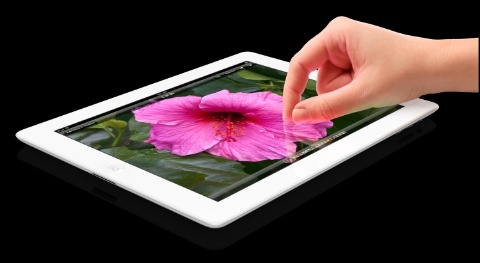With its leading market share position and high memory usage, the iPad is set to continue to dominate worldwide demand for NAND flash in media tablets at least through the year 2015, according to the “Memory & Storage Service” report from IHS iSuppli (http://www.isuppli.com), an information and analytics provider.
Apple’s iPad in 2011 accounted for a commanding 78% of global gigabyte shipments of NAND flash for use in media tablets, down from 92% n 2010, when it had the market all to itself for most of the year. Despite the inroads of competitors this year, Apple will continue to dominate tablet NAND purchasing in 2012, with a 72% share of gigabyte shipments. By 2015, Apple will continue to account for a majority of tablet NAND purchasing, at 58%, says iHS.
“Apple’s continued domination of the sales of NAND flash for media tablets reflects not only the iPad’s commanding market share lead, but its extensive memory usage,” says Nguyen, memory analyst at IHS. “In keeping with its status as a high-end offering in the tablet market, the iPad employs a larger density of NAND than its competitors. Because of this, Apple’s iPad will continue to drive the growth of NAND sales in the tablet market for the next several years.”
Overall shipments of NAND flash for all media tablets will rise to 16.3 billion gigabytes by 2015, up by a factor of 10 from 1.6 billion gigabytes in 2011. By 2015, media tablets will account for 17 percent of global NAND shipments, up from 9% in 2011, according to iHS.
The new iPad model comes with memory configurations identical to its predecessor, with 16, 32, and 64 Gigabyte options, costing the consumer $100 to go from one memory configuration to the next. IHS estimates that the average NAND density of the iPad will grow 9.4% in 2012 to 33.8 Gigabytes per unit.
Meanwhile, demand for competing high-end media tablets has been tepid. The most success for the non iPad tablets has come at the lower end of the spectrum, where NAND memory densities are considerably smaller. Such tablets are attractive to consumers that have been priced out of the Apple market.
IHS estimates that the average NAND density for non-iPad media tablets will come in at 20.2 Gigabytes in 2012, making up just 3.2% of total NAND demand. Thus, while the media tablet category has grown to be a major demand driver for NAND, success has been uneven across the field, with the iPad line driving the majority of NAND consumption for the segment.
While the iPad has proven to be a NAND glutton, its appetite for the other major type of semiconductor memory, DRAM, has been more restrained, says iHS. The first iPad used just 2 Gigabits of mobile DRAM. While the iPad 2 upped that amount to 4 Gigabits, it still managed to keep its DRAM content lower than most of its competitors — and even compared to many of the smartphones that were launched in 2011.
“Apple has been able to limit the amount of DRAM usage in the iPad because its iOS operating system and hardware are designed in tandem and optimized for each other,” says Mike Howard, senior principal analyst for DRAM & memory at IHS. “Android, however, doesn’t enjoy this luxury. As a result, many Android handsets and tablets shipped with 8 Gigabits of DRAM in 2011.”
The higher resolution screen and improved graphics of the newest iPad likely will result in another doubling of DRAM content to 8 Gigabits. Still, with Android tablets emerging in 2012 that use 16 Gigabits of DRAM, the iPad will continue to appear lean on DRAM.
Tablets as a category so far have put little pressure on the overall supply of DRAM, per iHS. However, that will change in the years to come. In 2012, tablets will consume 3.5% of all DRAM; that number will more than double to 8.1 percent in 2016.
“For a category to go from non-existence to consuming nearly 10 percent of all DRAM in just six years is extraordinary,” Howard says.

